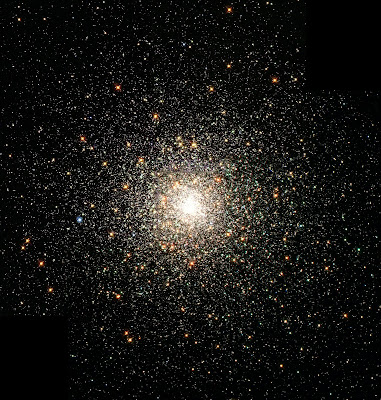 |
| Photo by Jeremy Thomas on Unsplash |
Stars? Who hasn't heard about them? But are you completely aware of Stars?
Let's make it simple. Lets even arouse your interest in Stars by providing you factual interesting information about stars.
Before getting into the articles, just enjoy an inspirational saying an of Sir Stephen Hawkins on Stars:
“Remember to look up at the stars and now down at your feet. Try to make sense of what you see and wonder about what makes the universe exist.
Be curious. And however difficult life may seem, there is always something you can do and succeed at. It matters that you don’t just give up.”
What are Stars?
Star is something that refers to the astronomical object, consisting of a luminous spheroid of plasma enacted by gravity. The nearest star to Earth is the Sun.
Many other stars are visible to the humans from Earth directly during the night. However, these are tremendously far apart from the Earth.
These are not that small that they appear to the naked eye but due to their immense distance, they appear like that. Astronomers have categorised star catalogues that identify the known stars and provide standardised details.
The universe observed contain an estimated 1×1024 stars but most are invisible to the naked eye from Earth, including all stars outside our galaxy.
Have You ever wondered why do we call stars as stars?
The name ‘Star’ is derived from the ancient Greek word 'aster' which means 'a star''
However, for some people, the word star is from the Middle English word sterre, from the Old English word steorra, which is from the Proto-Germanic word sterron.
Shortly the word star as a result of a series of transformations from an earlier designated word for those twinkling objects in the sky.
Quite obviously the name of stars varies with different languages, so why do we call stars as stars? Because it was named it!
Facts About Stars are as follows:
Twinkling is not a property of the stars:
- Twinkling is not a property of the stars, but of the planet Earth’s turbulent atmosphere/surrounding. As the light from a star passes through the atmosphere, especially when the star appears near the horizon, it must cross through certain layers of often rapidly differing density.
When the light ultimately gets to the eyes, but every deflection causes it to change slightly in colour and intensity. The result is “twinkling.”
Above the Earth’s atmosphere, however, stars do not twinkle. So now you better mind saying:
Twinkle Twinkle Little Star.
The stars absorb all radiations that fall on it:
- The stars absorb all radiations that fall on it, but it also radiates/reflects back into space much more than it absorbs(taking in). Thus a star is a black body that glows with magnificent brilliance.
A star dying:
- When a star is about to dye it turns into a “white dwarf", when the star completely uses up all of the chemicals required for its nuclear fusion (joining of daughter atoms) reaction, it will fuse a large clump, which will release high radiation white light until it finally darkens for good.
The coolest star:
- The coolest stars in-universe are red and these are around 3500 kelvin.
There are estimated to be up to 400 billion stars in the galaxy:
- There are estimated to be up to 400 billion stars in the galaxy, and over 500 million galaxies in the Universe.The estimate that's out there is 200,000,000,000,000,000,000,000 stars.
The colour of a star:
- The Star sun actually is white in colour if views from space.
10 to 20 million old stars:
- The five stars of the Southern Cross are believed to be between 10 and 20 million years old.
The brightest star:
- Sirius is the brightest star which is 20 times brighter than the sun , great to know that, isn't it?
- Shootings stars are not really stars. These are the rock or dust that when it hits the Earth’s atmosphere, moving at such a fast rate, it heats up and glows as it travels through the atmosphere.
- There are officially 88 different constellations of stars in our hemispheres.
- Shooting Stars are really fast, reaching up to a speed of 120,000 miles per hour!
- The colours of a shooting star may sometime also direct towards the minerals that make up the space rock.
- The Sun is over 4 billion years old!
- Some stars are known as binary stars as they have a twin star nearby that looks similar to them.
- The universe has over 200 billion stars.
- If you moved the big star to our solar system, it would stretch beyond Earth’s orbit.
- Less massive stars are expected to live much longer than bigger stars. The completely opposite can be said for small red dwarfs, who are burning their hydrogen in an extremely slow rate.
- The core of a star reaches 16 million degrees Celsius.
- Neutron stars can spin/rotate at 600 rotations per second.
Mind Blown with these, right? So now let's have some looks on quotes regarding Stars to make these articles even informative and interesting:
- Moonlight drowns out all but the brightest stars (J.R.R Tolkien).
- He cosmos is within us. We are made of star-stuff. We are a way for the universe to know itself. (Carl Sagan)
- All we ever see of stars are their old photographs. (Alan Moore).
- I love the stars.
Because they can't say anything.
I love the stars.
Because they do not judge anyone. (Natsuki Takaya).
- When he shall die,
Take him and cut him out in little stars,
And he will make the face of heaven so fine
That all the world will be in love with night
And pay no worship to the garish sun. (William Shakespeare).
FAQ on Stars:
Q: Do all Stars have a name?
ANS: Around 250 0f the bright stars do only.
Q: How can the distances to the near stars measure?
ANS: The distances to the nearer stars are measured mathematically, by the use of trigonometric parallax. "Parallax" is a word of Greek origin meaning the difference in the apparent positions of an object.
Q: How many stars can we see on a clear night?
ANS: A man can see between 3,500 and 4,000 stars.
Q: What is meant by a giant star?
ANS: It is a star whose diameter is between 10 times the diameter of the Sun and 100 times its diameter.
Q: What are the sizes of the supergiant stars?
ANS: The largest stars are about 3,000 times the diameter of Sun. In kilometres, this is from about 5 thousand million kilometres in diameter to about 160 million kilometres.
Conclusion / My Final Thoughts:
Surely it is a great experience to go through stars. The following article does not only provides facts about stars but also arouses readers interests by interesting quotes and sayings. To conclude, the study and knowledge of Stars is a very very vast topic. Any article cannot be capable of providing sufficient details of the topic but we hope that your question is answered. The Root Bridge thanks you for reading!
Conclusion / My Final Thoughts:
Surely it is a great experience to go through stars. The following article does not only provides facts about stars but also arouses readers interests by interesting quotes and sayings. To conclude, the study and knowledge of Stars is a very very vast topic. Any article cannot be capable of providing sufficient details of the topic but we hope that your question is answered. The Root Bridge thanks you for reading!

Comments
Post a Comment